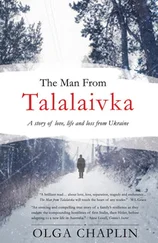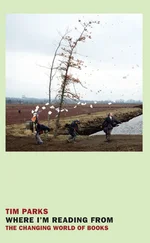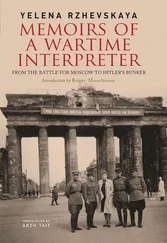Today the massive structure stands on sandy ground surrounded by trees. As it was a super-secret military object, even people in Pripyat did not know what it was, although from top-floor apartments they could see its wall of steel pipes, cones and wires. They dubbed it the “modern macaroni factory.” Maps made out that the site was an abandoned camp of the Communist Party’s Pioneer youth organization or, alternatively, the KGB let slip that it was some sort of experiment in housing technology.
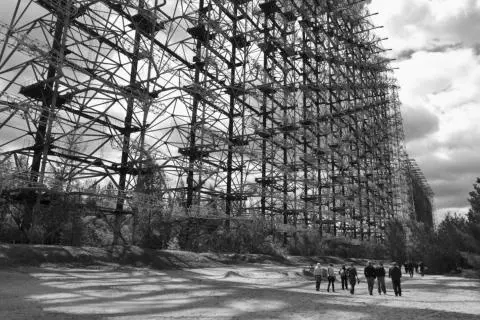
The Duga-3 radar in the Chernobyl exclusion zone. May 2015.
You can climb to the top, or as high as you dare, and hear the strange rushing noise the wind makes as it blows through the antennas. From a distance it sounds like the din of traffic. In the abandoned military buildings around it lie the remains of ancient pieces of electrical equipment and walls decorated with murals of a fantasy future in which cosmonauts are building a circular space station that recalls the one from Stanley Kubrick’s film 2001: A Space Odyssey , made in 1968. Now the radar is slated to be dismantled and sold for scrap. It would be a tragedy if that happened. Like everything else in the zone, it is a historical monument to what feels here like a vanished civilization, a kind of Ukrainian Pompeii. That is worth more than its scrap metal value.
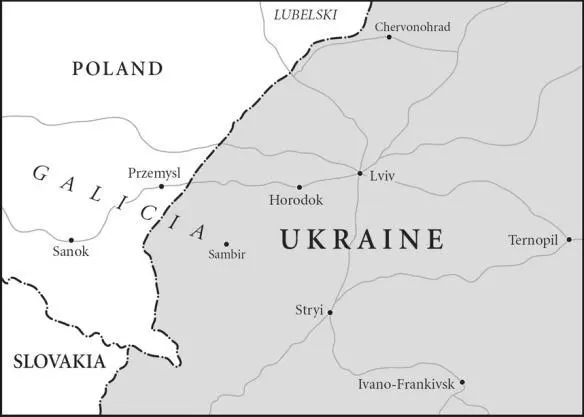

Opera house. Lviv, July 2013.
One of the best places to think about Ukraine’s past and its relationship with the present is Lviv. Its center is a fabulous collection of gothic, renaissance, baroque and classic nineteenth-century Austro-Hungarian styles, the buildings increasingly restored to their previous glory. It takes no imagination to see how this city was once part of the same cultural space which stretched from here to Zagreb, Croatia’s capital, which in some respects it resembles.
It would not be true to say that Lviv’s history was more traumatic than that of many other places in Ukraine. Lviv, however, is different in the sense that historically it was an important and cosmopolitan city which, until it became part of the Soviet Union, was connected, both as part of the Austro-Hungarian empire and then as part of Poland, with the main currents of European life. Today, some of its history weighs very heavily on Ukraine, because of what really happened, what people believe happened, what people are told happened and what is forgotten.
Elsewhere I have not enumerated the different names of each place in every language but with Lviv I will, because some readers may recognize it by one of its other names. The name means “city of lions” and the lion is the city’s symbol. Lviv is what this city of a million people is called in Ukrainian. In Russian it is L’vov, in Polish Lwów, in German Lemberg and in Yiddish either Lemberg or Lemberik. During the Austro-Hungarian period, which lasted from 1772 to 1918, the city, the heart of eastern Galicia, was officially known by its German name. From 1918 to 1939 it was the third-biggest city in Poland. Then it was taken by the Soviets, followed by the Nazis, and the Soviets returned in 1944. Like Thessaloniki in Greece and Vilnius in Lithuania, it is one of those European cities whose population today is so different from what it used to be that few people who live here nowadays can say that their families lived here before 1945.
In 1931 about half the population of the city was Polish, roughly a third was Jewish and 15.9 percent was Ukrainian. In the previous decades those proportions had fluctuated, but not very dramatically. In eastern Galicia, though, the ethnic makeup of the towns was not the same as in the countryside and region in general. Here some 60 percent of the population was Ukrainian, and only a quarter Polish. Jews made up most, but not all, of the rest. After the war, virtually all of the Jews had been wiped out and then, in the period to 1947, the vast majority of the Poles were “repatriated” to Poland because Lviv and eastern Galicia had become Soviet again. The word “repatriation” was Orwellian, of course, because these Poles were being sent to places they had not come from. Fear was a big motivating factor: many of those who had survived the war and arrests and deportations during the first Soviet occupation did not want to risk staying in the USSR. In the villages many left because they were afraid of attacks by the nationalist partisans of the Ukrainian Insurgent Army (UPA), and there were also tales of NKVD, ministry of interior troops, pretending to be UPA fighters to intimidate people in order to prompt them to go.
According to the historian Timothy Snyder, some 780,000 Poles were sent to Poland from what was now Soviet Ukraine. Including Belarus and Lithuania, the official number sent was 1,517,913, of whom 100,000 were Jews who had survived the Holocaust, but the total number of people who left was larger because “a few hundred thousand left without registering for official transports.” From Lviv many were sent to Breslau, in Silesia, which was German until 1945, when it became Wrocław and was incorporated into Poland. Here too the Jews had been killed, but what had been an overwhelmingly German city now became a completely Polish one as the Germans fled or were expelled. Many artistic, religious and other cultural treasures were taken from Lviv to Wrocław, including a vast circular panoramic painting of a 1794 defeat of the Russians at the hands of the Poles, which came out of hiding to be exhibited again only in 1985.
Just as the Poles were being sent to Poland, some 483,099 Ukrainians were sent to Ukraine from the regions they inhabited in what was to remain in Poland. In the so-called Operation Vistula another 140,660 Ukrainians were ethnically cleansed from their homes and sent to settle in other parts of Poland. Those who came to Ukraine were not sent to Lviv though because most were peasants and they were needed in the countryside to replace the Polish peasants who had been sent to Poland. Whole villages on either side of the border were uprooted, but their inhabitants were often kept together and transplanted on the other side. While they were sent to villages, as Lviv industrialized they, or their children, or other Ukrainians who had always lived in the countryside, came for work to the city. This process only took off massively in the 1960s though, because Soviet laws did not allow people to move freely from the countryside. Still, by 1950 Lviv was already well on the way to becoming the almost totally Ukrainian and Ukrainian-speaking city that it is today. By then about half of the population were Ukrainian, 27 percent Russian and 6 percent Jewish, though many of the latter had not been natives of Lviv before the war.
Svetlana Zymovnya is the chief statistician for the Lviv District, and the story of her family is typical. Her father was born in Sanok, which is now in southeastern Poland. Before the Second World War this was a heavily Ukrainian area. “When he was fourteen they were sent here,” she said, “to a village near Lviv where they lived in a house built of clay which only had one room.” There were five children in the family. But in Poland, “they were rich and had a lot of land.” Their new circumstances left them with not enough money and there was little to eat, so her father walked to Lviv to work in a then still Polish-owned furniture factory.
Читать дальше




